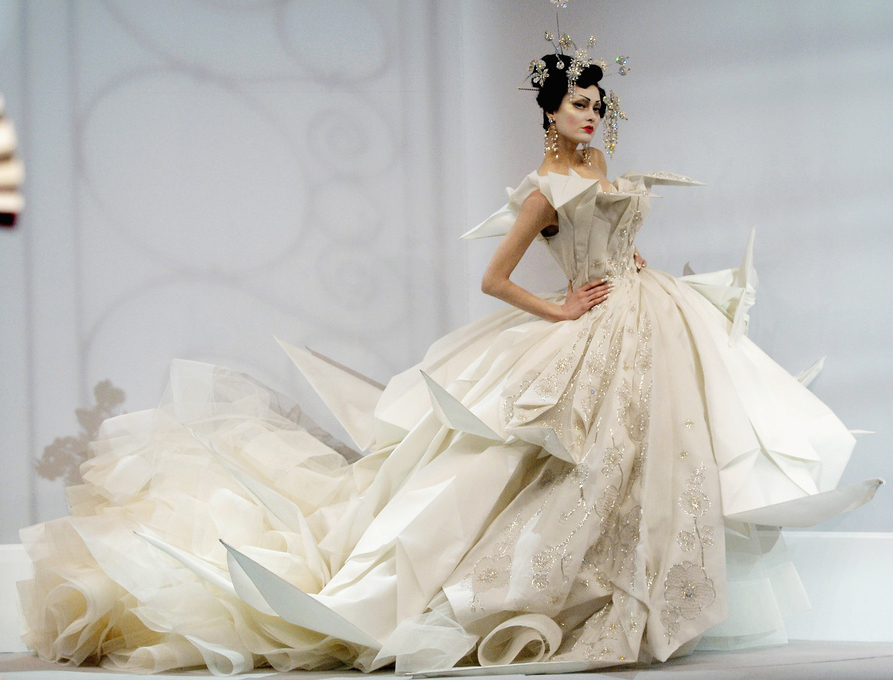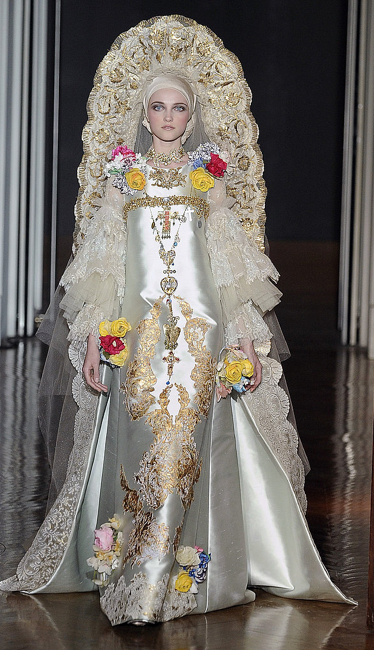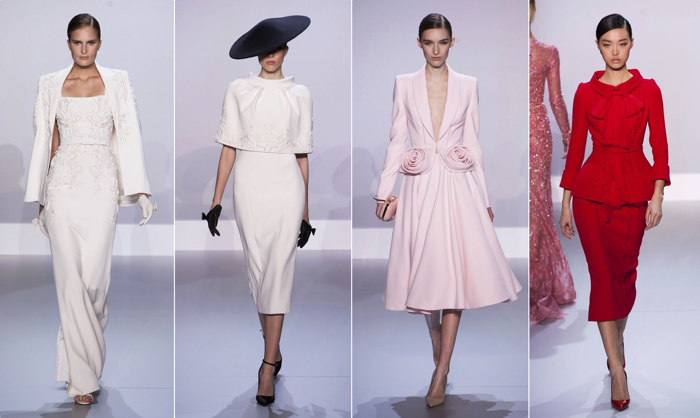Article in brief: the author discusses the supposed downhill of haute couture in fashion.

“Haute couture should be fun, foolish and almost unwearable,” claims the French designer Christian Lacroix. He was after all, celebrated for his divine talent in designing haute couture clothes that resembled pieces of art rather than an item one would wear. That led to the bankruptcy of his label in 2009, as it never made a profit. As a result, Lacroix concluded his work in designing and had no choice but to focus instead on accessories and perfumery. The industry mourned the end of Lacroix’s tenure, given the fact that no investors came forward to back him financially after the declaration.
Haute couture is defined as “the art of dressmaking on a luxurious and grandiose scale”, not to mention “high sewing”. The process of creating an haute couture piece is excruciating, as it requires impeccable craftsmanship, which according to The Telegraph, takes up to 700 hours. It doesn’t end there; for a designer to be considered as an haute couturier he/she must be a member of the Chambre Syndicale de la Haute Couture, an institution founded in 1973.

Designers must abide to a set of rules established by the institution, such as creating 50 exquisite garments for daywear and eveningwear as part of each collection. A dramatic irony is that most couture garments, which sell approximately at a minimum of $12,000 and may even amount to $9 million, do not get sold: meaning that garments created from scratch are mostly archived.
The exclusive division of fashion that is haute couture means inviting the elite and the press only to view the shows, which take place twice a year for the fall/winter and spring/summer seasons. As entrancing as it sounds, haute couture is seemingly unaffordable for a wide range of customers; ultimately most brands make no returns from their “high sewing” attires.
This ostensibly labels haute couture as simply artistic and appreciated for the hard work that goes into creating the pieces, but the line is drawn just there. It’s not as profitable as ready-to-wear, and brands are beginning to question its significance. Is it worth saving haute couture by commercializing it or should brands finally discontinue their haute couture lines?
Several brands have begun to realize that haute couture should appeal to practicality rather than be a sore sight to the eyes. Dior has very much followed such an idea that after firing John Galliano (a British designer that transformed the house of Dior by his love for different cultures and ethnicities), the French house recruited Belgian designer Raf Simons to channel Dior’s original aesthetic. In other words, designing clothes that were all-so simple and the total opposite of what Galliano produced for the brand during his tenure.
With Dior’s haute couture collections, Simons’ does not go overboard with style but rather focuses on quality and overall fit. With the revealing of the latest collection, much speculation has been voiced about whether Simons’ was able to separate himself from the ever-continouing cycle of modernization. The Belgian designer even cited David Bowie as his inspiration; hence the over-the-top sequined boots and PVC coats. Some found it amusing, while other members of the press were flabbergasted. Angelo Flaccavento of the Business of Fashion claims that Simons “tried with all his force to bring the house codes out of a narrow jolie madame niche”.
Flaccavento even goes on to state the fact that couture shows have taken to a “general toning down” due to economic factors ensuing in China and Russia, not to mention a change in target consumers. Other brands, such as Valentino, now send repetitive looks down the runway, including simple gowns with little embellishments and playsuits with a ruffled detail on the shoulder – but that’s as far as it goes. Even new emerging haute couture designers such as Rad Hourani and Ralph & Russo seem to have caught up with the news.

A sad but true fact is that couture is not as it was before during the times of Paul Poiret and Jacques Doucet, where excessively glamorous gowns were celebrated for welcoming an era that would soon meet its end. I wouldn’t be shocked myself if the result of modernization and the endless need to keep it casual would result in the end of haute couture. As of now, the magnificence that is couture is hanging by a thin but firm thread.
References:
- http://www.theguardian.com/lifeandstyle/2009/dec/01/christian-lacroix-fashion-house-closure
- http://www.modeaparis.com/en/federation/
- http://fashion.telegraph.co.uk/article/TMG10147014/Haute-Couture-fact-file.html
- http://www.businessoffashion.com/2015/01/angelo-couture.html
- http://stylecaster.com/haute-couture-means-buys-costs/
- http://www.forbes.com/2006/06/27/haute-couture-fashion_cx_ls_0628feat_ls.html




These designs are never going out of the fashion trend rather they are past or become a future. They seems to be formal and suitable to be used on different occasions every time.